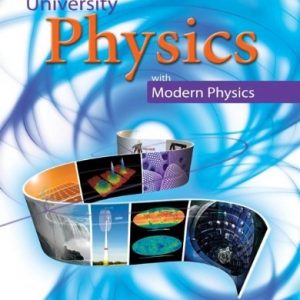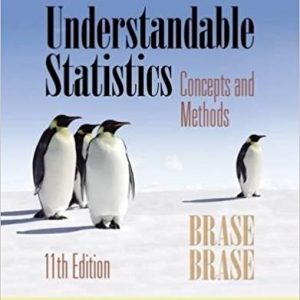This is completed downloadable of Solution Manual for Inquiry into Physics 8th Edition

Product Details:
- ISBN-10 : 1305959426
- ISBN-13 : 978-1305959422
- Author: Vern Ostdiek, Don Bord
What do iPods, GPS devices, airport metal detectors, LCD displays, and PET scans have to do with physics? The Eighth Edition of INQUIRY INTO PHYSICS answers these questions and many others, helping you understand fundamental concepts using a unique inquiry-based approach. The text integrates modern applications of physics such as plasma TVs and radar “guns” to demonstrate the relevance of physics in daily life.
Table of Content:
- P.1 Introduction
- P.2 Why Learn Physics?
- P.3 What Is Physics?
- P.4 How Is Physics Done?
- P.5 How Does One Learn Physics?
- P.6 Physical Quantities and Measurement
- Commerical Applications: The Metric System: “For All Time, for All People.”
- Chapter 1: The Study of Motion
- Chapter Introduction: Drag Racing
- 1.1 Fundamental Physical Quantities
- 1.1a Distance
- 1.1b Time
- 1.1c Mass
- Commerical Applications: Time Out!
- 1.2 Speed and Velocity
- 1.2a Speed
- 1.2b Velocity
- 1.2c Vector Addition
- 1.3 Acceleration
- 1.3a Centripetal Acceleration
- 1.4 Simple Types of Motion
- 1.4a Constant Velocity
- 1.4b Constant Acceleration
- 1.4c More on Kinematics Graphs
- Profiles in Physics: Aristotle vs. Galileo
- Summary
- Important Equations
- Mapping it Out!
- Questions
- Problems
- Challenges
- Chapter 2: Newton’s Laws
- Chapter Introduction: New Horizons—Old Physics
- 2.1 Force
- 2.1a Weight
- 2.1b Friction
- Engineering Applications: Friction: A Sticky Subject
- 2.2 Newton’s First Law of Motion
- 2.2a Centripetal Force
- 2.3 Mass
- 2.4 Newton’s Second Law of Motion
- 2.4a Force and Acceleration
- 2.4b The International System of Units (SI)
- 2.5 Examples: Different Forces, Different Motions
- 2.5a Projectile Motion Revisited
- 2.5b Simple Harmonic Motion
- 2.5c Falling Body with Air Resistance
- Mathematical Applications: Chaotic Dynamics
- 2.6 Newton’s Third Law of Motion
- 2.7 The Law of Universal Gravitation
- 2.7a Orbits
- 2.7b Gravitational Field
- 2.8 Tides
- Profiles in Physics: Isaac Newton
- Summary
- Important Equations
- Mapping it Out!
- Questions
- Problems
- Challenges
- Chapter 3: Energy and Conservation Laws
- Chapter Introduction: Forensic Physics
- 3.1 Conservation Laws
- 3.2 Linear Momentum
- 3.2a Newton’s Second Law, Revisited
- 3.2b Conservation of Linear Momentum: Collisions
- 3.3 Work: The Key to Energy
- 3.3a Work
- 3.3b Different Forces, Different Work
- 3.4 Energy
- 3.4a Mechanical Energy: Kinetic and Potential
- 3.4b Other Forms of Potential Energy
- 3.5 The Conservation of Energy
- 3.5a Applications of Energy Conservation
- 3.6 Collisions: An Energy Perspective
- 3.6a Types of Collisions
- 3.6b Noncontact Collisions
- 3.7 Power
- Environmental Applications: Exponential Growth and the Energy “Crisis”
- 3.8 Rotation and Angular Momentum
- Astronomical Application: Starquakes: A Glitch in Time
- Profiles in Physics: Archimedes of Syracuse: Engineering Physicist
- Summary
- Important Equations
- Mapping it Out!
- Questions
- Problems
- Challenges
- Chapter 4: Physics of Matter
- Chapter Introduction: Airships
- 4.1 Matter: Phases, Forms, and Forces
- 4.1a Phases of Matter
- 4.1b Forms of Matter
- 4.1c Behavior of Atoms and Molecules
- Lexicological Application: What’s in a Name?
- 4.2 Pressure
- 4.2a Defining Pressure
- 4.2b Gauge Pressure
- 4.3 Density
- 4.3a Mass Density
- 4.3b Weight Density and Specific Gravity
- 4.4 Fluid Pressure and Gravity
- 4.4a The Law of Fluid Pressure
- 4.4b Fluid Pressure in the Atmosphere
- 4.5 Archimedes’ Principle
- 4.5a Buoyancy
- 4.5b Archimedes’ Principle
- 4.5c Applications of Archimedes’ Principle
- Low-Temperature Application: Superfluids: Friction-free Flow
- 4.6 Pascal’s Principle
- 4.7 Bernoulli’s Principle
- Profiles in Physics: The Rise of the Modern Atomic Theory and the Development of Fluid Physics
- Summary
- Important Equations
- Mapping It Out!
- Questions
- Problems
- Challenges
- Chapter 5: Temperature and Heat
- Chapter Introduction: Hurricanes
- 5.1 Temperature
- 5.1a Temperature Scales
- 5.1b Temperature and Energy
- Atmospheric Science Applications: To Breathe or Not to Breathe, That is the Question
- 5.2 Thermal Expansion
- 5.2a Solids: Linear Expansion
- 5.2b Liquids
- 5.2c Gases: The Ideal Gas Law
- 5.3 The First Law of Thermodynamics
- 5.3a Heat and Internal Energy
- 5.3b The First Law of Thermodynamics
- 5.4 Heat Transfer
- 5.4a Conduction
- 5.4b Convection
- 5.4c Radiation
- 5.4d Combinations
- Astronomical Application: Energy Flow in Stars
- 5.5 Specific Heat Capacity
- 5.6 Phase Transitions
- 5.6a Latent Heats
- 5.6b Humidity
- 5.7 Heat Engines and the Second Law of Thermodynamics
- 5.7a Heat Engines
- 5.7b Heat Movers
- 5.7c Usable Energy
- Profiles in Physics: Thermometry and Calorimetry
- Summary
- Important Equations
- Mapping it Out!
- Questions
- Problems
- Challenges
- Chapter 6: Waves and Sound
- Chapter Introduction: Sound Medicine
- 6.1 Waves—Types and Properties
- 6.1a Wave Types and Speed
- 6.1b Amplitude, Wavelength, and Frequency
- 6.2 Aspects of Wave Propagation
- 6.2a Wave Fronts and Rays
- 6.2b Reflection
- 6.2c Doppler Effect
- 6.2d Bow Waves and Shock Waves
- 6.2e Diffraction
- 6.2f Interference
- Astronomical Application: The Hubble Relation—Expanding Our Horizons
- 6.3 Sound
- 6.3a Pressure Waves
- 6.3b Sound Applications
- Meteorlogical Applications: Putting Sound to Work
- 6.4 Production of Sound
- 6.5 Propagation of Sound
- 6.5a Reverberant Sound
- 6.5b Reverberation Time
- 6.6 Perception of Sound
- 6.6a Pitch
- 6.6b Loudness
- 6.6c Tone Quality
- Profiles in Physics: Acoustics Pioneers
- Summary
- Important Equations
- Mapping it Out!
- Questions
- Problems
- Challenges
- Chapter 7: Electricity
- Chapter Introduction: iProducts—iPods, iPads, and iPhones
- 7.1 Electric Charge
- 7.2 Electric Force and Coulomb’s Law
- 7.2a Coulomb’s Law
- 7.2b The Electric Field
- Meterological Applications: Electrifying Sights and Sounds—A Thunderstorm Primer
- 7.3 Electric Currents—Superconductivity
- 7.3a Electric Current
- 7.3b Resistance
- 7.3c Superconductivity
- 7.4 Electric Circuits and Ohm’s Law
- 7.4a Voltage and Ohm’s Law
- 7.4b Series and Parallel Circuits
- Medical Applications: Electricity and the Human Body
- 7.5 Power and Energy in Electric Currents
- 7.6 AC and DC
- Profiles in Physics: Founders of Electrical Science
- Summary
- Important Equations
- Mapping it Out!
- Questions
- Problems
- Challenges
- Chapter 8: Electromagnetism and EM Waves
- Chapter Introduction: Metal Detectors
- 8.1 Magnetism
- 8.1a Magnetic Materials and Fields
- 8.1b Earth’s Magnetic Field
- 8.2 Interactions between Electricity and Magnetism
- 8.2a Electromagnets
- 8.2b Electric Motors
- 8.2c Electromagnetic Induction and Electric Generators
- 8.3 Principles of Electromagnetism
- 8.4 Applications to Sound Reproduction
- 8.4a Microphones and Magnetic Tape Devices
- 8.4b Digital Sound
- 8.5 Electromagnetic Waves
- 8.5a Radio Waves
- 8.5b Microwaves
- 8.5c Infrared
- 8.5d Visible Light
- 8.5e Ultraviolet Radiation
- 8.5f X-Rays
- 8.5g Gamma Rays
- Behavioral Sciences Application: N Rays – “C’est une erreur”
- 8.6 Blackbody Radiation
- 8.6a BBR Laws
- 8.6b Temperature Measurement
- 8.6c Detection of Warm Objects
- Astronomical Application: Cosmic Background Radiation (CBR)—A Relic of the Big Bang
- 8.7 EM Waves and Earth’s Atmosphere
- 8.7a Ozone Layer
- 8.7b Greenhouse Effect
- 8.7c The Ionosphere
- 8.7d Astronomy
- Profiles in Physics: 19th Century Leaders in Electromagnetism
- Summary
- Important Equations
- Mapping It Out!
- Questions
- Problems
- Challenges
- Chapter 9: Optics
- Chapter Introduction: Doggone It!
- 9.1 Light Waves
- 9.1a Reflection
- 9.1b Diffraction
- 9.1c Interference
- 9.1d Polarization
- 9.2 Mirrors: Plane and Not So Simple
- 9.2a “One-Way Mirror”
- 9.2b Curved Mirrors
- 9.2c Astronomical Telescope Mirrors
- 9.3 Refraction
- 9.3a The Law of Refraction
- 9.3b Total Internal Reflection
- 9.4 Lenses and Images
- 9.4a Image Formation
- 9.4b Magnification
- 9.4c Aberrations
- Optical Engineering Applications: Fresnel, Pharos, and Physics
- 9.5 The Human Eye
- 9.5a Defects of the Eye
- 9.5b Eye Surgery
- 9.6 Dispersion and Color
- 9.7 Atmospheric Optics: Rainbows, Halos, and Blue Skies
- 9.7a Rainbows
- 9.7b Halos
- 9.7c Blue Skies
- Profiles in Physics: “On the Shoulders of Giants”
- Summary
- Important Equations
- Mapping it Out!
- Questions
- Problems
- Challenges
- Chapter 10: Atomic Physics
- Chapter Introduction: Something Old, Something New
- 10.1 The Quantum Hypothesis
- 10.1a Blackbody Radiation
- 10.1b Quantized Oscillators
- 10.2 The Photoelectric Effect and Photons
- 10.2a Photoelectric Physics
- 10.2b Applications of the Photoelectric Effect
- 10.3 Atomic Spectra
- Spectroscopic Applications: Cosmic Chemistry, “…To Dream of Such a Thing”
- 10.4 The Bohr Model of the Atom
- 10.4a Atomic Spectra Explained
- 10.4b Model Assumptions
- 10.5 Quantum Mechanics
- 10.5a de Broglie’s Hypothesis
- 10.5b The Bohr Atom Explained
- 10.6 Atomic Structure
- 10.6a Atomic Energy Levels
- 10.6b Some Applications
- 10.6c The Pauli Exclusion Principle
- 10.7 X-Ray Spectra
- 10.8 Lasers
- Optical Applications: Holograms—3-D Images, No Glasses Required
- Profiles in Physics: The Solvay Conferences
- Summary
- Important Equations
- Mapping it Out!
- Questions
- Problems
- Challenges
- Chapter 11: Nuclear Physics
- Chapter Introduction: Radioactive Sentinel
- 11.1 The Nucleus
- 11.2 Radioactivity
- 11.2a Alpha Decay
- 11.2b Beta Decay
- 11.2c Gamma Decay
- 11.2d Radioactivity and Energy
- 11.2e Applications
- 11.3 Half-Life
- 11.3a Quantifying Half-Lives
- 11.3b Radioactive Dating
- Medical Applications: Radiation: A Killer Turned Lifesaver
- 11.4 Artificial Nuclear Reactions
- 11.5 Nuclear Binding Energy
- 11.6 Nuclear Fission
- 11.6b Nuclear Power Plants
- 11.6c Power Plant Accidents
- 11.6a Atomic Bombs
- 11.7 Nuclear Fusion
- 11.7a Fusion in Stars
- 11.7b Thermonuclear Weapons
- 11.7c Controlled Fusion
- 11.7d Cold Fusion
- Profiles in Physics: A Gallery of Nuclear Scientists
- Summary
- Important Equations
- Mapping it Out!
- Questions
- Problems
- Challenges
- Chapter 12: Relativity, Particle Physics, and Cosmology
- Chapter Introduction: Antimatter, Available at a Medical Facility Near You
- 12.1 Special Relativity: The Physics of High Velocity
- 12.1a Postulates of Special Relativity
- 12.1b Predictions of Special Relativity
- 12.2 General Relativity
- 12.2a Introduction
- 12.2b Einstein’s Theory of General Relativity
- 12.2c Motion in Curved Spacetime
- 12.3 Forces and Particles
- 12.3a The Four Forces: Natural Interactions among Particles
- 12.3b Classification Schemes for Particles
- 12.3c Spin
- 12.3d Elementary Particle Lexicon
- 12.4 Quarks: Order Out of Chaos
- 12.4a Quarks
- 12.5 The Standard Model and GUTs
- 12.5a Quark Colors and Flavors
- 12.5b Charm, Truth, and Beauty
- 12.5c The Electroweak Interaction and GUTs
- 12.6 Cosmology
- 12.6a Geometry, Dark Matter and Dark Energy
- 12.6b The Inflationary Universe
- Astronomical Application: Big Bang Nucleosynthesis
- Profiles in Physics: Murray Gell-Mann, Quark-atech
- Summary
- Important Equations
- Mapping it Out!
- Questions
- Problems
- Challenges
- Appendixes
- A: Winners of the Nobel Prize in Physics
- B: Math Review
- C: Answers
- Glossary
- Index





